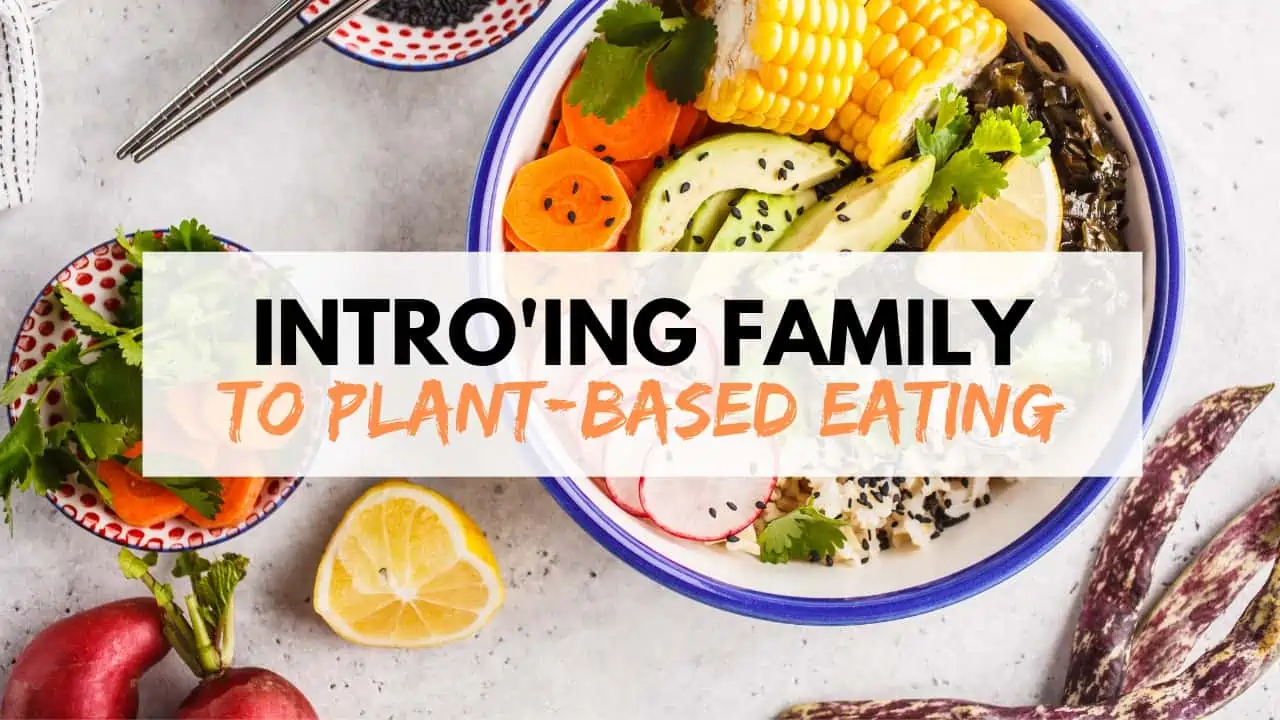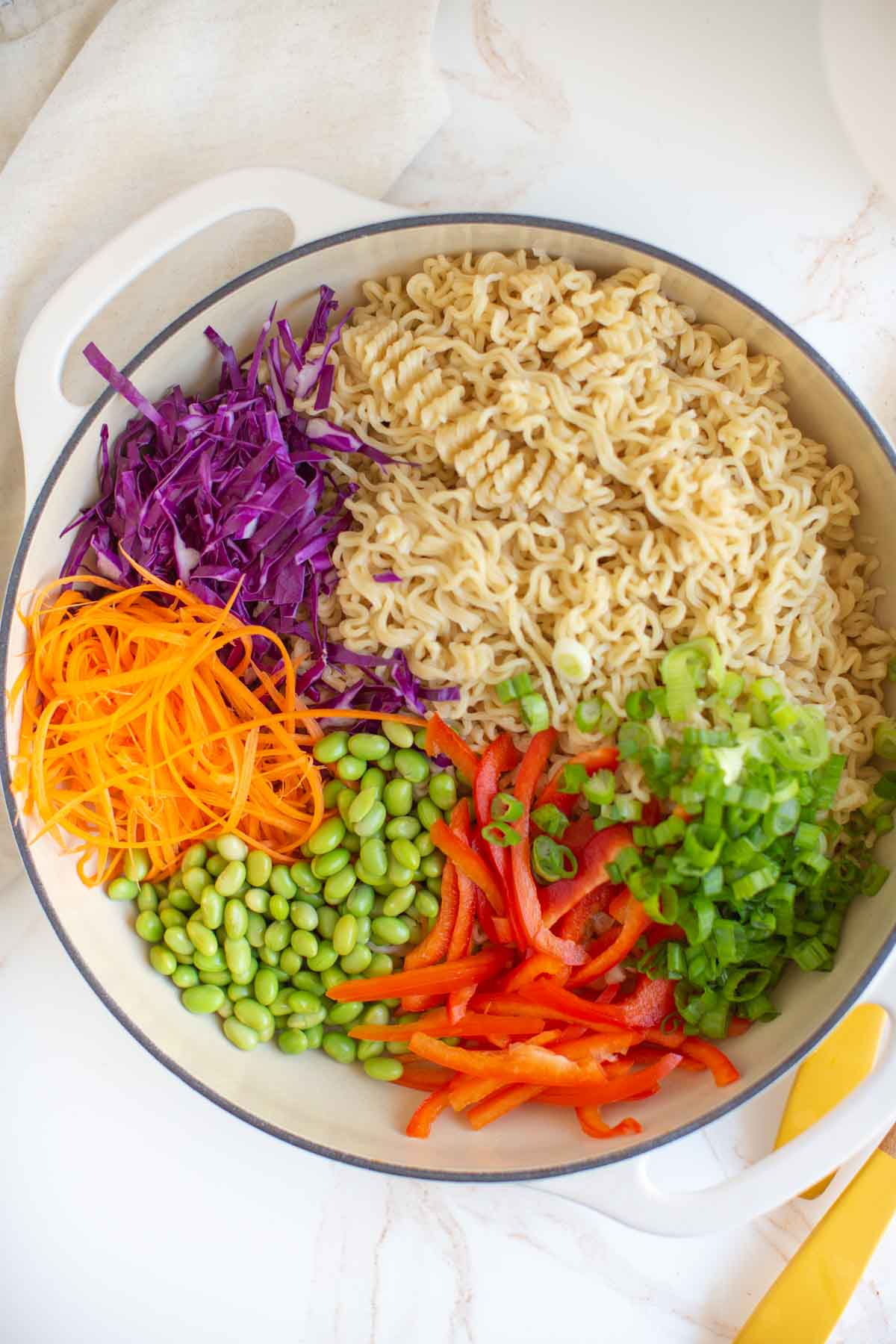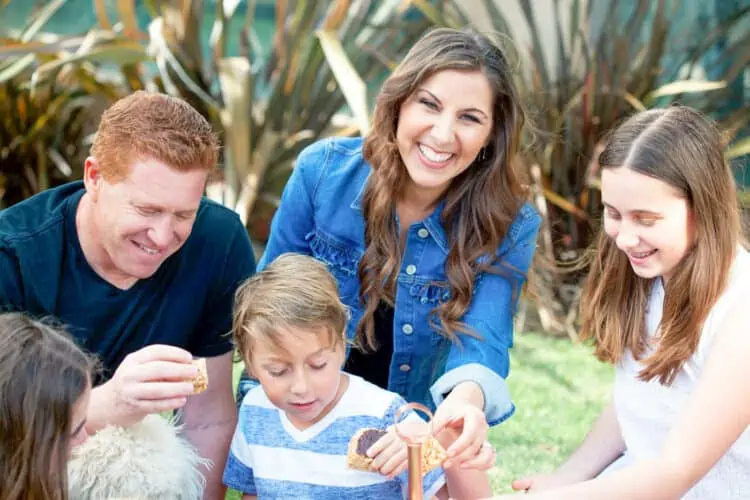How to Introduce Your Family to Plant-Based Eating


As the solo vegan in my household, sharing vegan food with family and friends is one of my greatest joys. With nine years behind me, while raising three kids (now between 9 and 15 years old), I’ve found my vegan mama groove. I know a thing or two about introducing your family to a plant-based diet, and today I’m here to help my fellow mama’s (and papa’s) do the same!
Sharing my plant-munching lifestyle hasn’t always been easy peasy. I made many, many, (oh so many) mistakes and my poor hubby and kids were often the innocent bystanders of my blunders. Gratefully, they still love me, and now we can laugh about it!
I joke, but introducing your family to a plant-based diet is no easy feat. If you’re fortunate enough to have gone vegan before you had a partner or brought kids into the world, I envy you! Going vegan is hard enough, but when you add the rest of your family or household into the mix, it takes things up a notch. But it is possible and can even be fun!

One thing I know for sure: a plan is critical.
Going vegan on Sunday and then declaring the rest of the family must follow on Monday isn’t going to work. (Trust me, I tried.)
Lucky for you, I’ve put everything I’ve learned into this 4-step plan for introducing your family to a plant-based diet. Take it step-by-step, and before long, you might find your family (or eventually vegan family) joining you on your journey!
Table of Contents
1. First Things, First
Before you make any changes to your family’s diet, communication is key. Hold a family meeting to talk about everyone’s expectations.
For example, when I went vegan, I desperately wanted my family to join me, but I realized that wasn’t a realistic expectation. Instead, I shared my hope that everyone would be open-minded about my new lifestyle and diet choice, with a willingness to try the new foods I would be preparing.
We also set up several ground rules. “Don’t yuck my yum” was (and still is nine years later!) one of my favorites. It’s helpful if you can set up the expectation that everyone needs to respect each other’s choices and give each other the space to do what’s right for them.
2. Preparation and Planning Are Key
If you’re not already in a meal planning groove, now is the time to create a weekly meal plan. It will take the surprise out of “What’s for dinner?” but also make it easier for you to grocery shop and cook.
Post your family’s meal plan in a highly visible place that gets a lot of traffic in your home. Anticipation can cause anxiety for kids so if they can take a peek at the plan regularly, they may feel more at ease about the changes you’re introducing.
Also, have each child make a list of their 10 favorite foods (many of them may be naturally vegan, and they don’t even know it!). Choose several from the list that is plant-based and keep those foods on hand for snacking.
In addition to their favorite foods, ask each child to give you a list of their favorite fruits and vegetables. Serve at least one of each child’s selections at your meals, so they always have an option that they enjoy (without you having to urge them to take a bite!).
3. Start Small
Once you’ve got your ground rules established and some meal planning basics together, start introducing your family to a plant-based diet with small changes.
First, make some easy swaps that they won’t even notice! When I went vegan, I immediately replaced the mayo and butter in the fridge with plant-based versions. My family was the none the wiser.
When it comes to mealtime, there are several simple ways you can add more plant foods to your family’s table.
4. Have Fun!
Most non-vegans think a plant-based lifestyle is about deprivation (what they can’t eat). They have it so wrong! There is actually so much more to eat when you look at the variety of options available in a plant kingdom, and you’re not restricted to a SAD (Standard American Diet) meal.
When you approach veganism as an adventure to be discovered, there is lots of fun to be had!
- Have fun searching for online recipes and exploring plant-based cookbooks together. Select recipes to make together as a family.
- Get out in the community and attend some of the annual vegan festivals and food fairs in your local area. Vegan doughnuts, ice cream, and burgers, oh my!
- Discovering and trying out new restaurants is another delicious way to explore vegan food together. HappyCow is a great smart phone app to help you locate the plant-based restaurants nearest to you.
- Incorporate a theme into at least one meal a week and make a different plant-based recipe each week. Think Waffle Wednesdays, Macaroni Mondays or Fiesta Fridays!

Simple Ways To Add More Plant Foods to Family Meals
- Go meatless once a week. Meatless Monday is a phenomenon with good reason. It gives you a chance to ease into vegan foods. Try one of these meal ideas to get your family to eat more veggies.
- Add more vegetables to family meals. Instead of taking things away from the table, add more variety to dinner with vegetable and plant-based side dishes that have your family asking for more!
- Veganize your family’s favorite meals. Have each child give you a list of their 5 favorite meals. Show them how delicious vegan can be by transforming a few of those favorites with plant-based alternatives. For example, instead of ground turkey in their spaghetti and meat sauce, use crumbled tempeh. Instead of dairy-based mac and cheese, make your own creamy vegan mac and cheese sauce using cashews. The opportunities are limitless with the bounty of vegan recipes and amazing cookbooks available today! Remember that no one is going to complain if the food is delicious so take your time finding recipes that are a hit with your family.
- Add a mixed meal or two to your dinner menus. Mixed meals were my solution to being a vegan mom with non-vegan kids when I first went plant-based. Tacos, sushi, soba noodle bowls, and lettuce wraps are all great ways to incorporate a variety of plant-based foods into the traditional mix that your family is used to eating. By offering new options, you may find them not needing the animal options over time. That’s what happened in my family after several months of serving black beans and regular turkey as fillings for Taco Tuesday. Now it’s only black beans and at their request!
- Try some meat alternatives. In addition to veganizing your family’s favorite meals with tofu, tempeh, and other plant-based proteins, you can also try some meal alternatives from fantastic companies, such as Field Roast, Gardein, Tofurky and Lightlife.

Remember…It’s a Journey!
Keep in mind that introducing your family to a plant-based diet is a process. Take your time to share new foods and tastes at a pace that works for everyone. Small changes add up to big transformations, and remember that every step your family takes toward eating more plants is a win for the planet, animals and your family’s health!

More Helpful Vegan Resources
If you’re just starting on your Plant-based lifestyle journey, don’t miss out on these insightful articles to help you succeed:






Leave a Comment